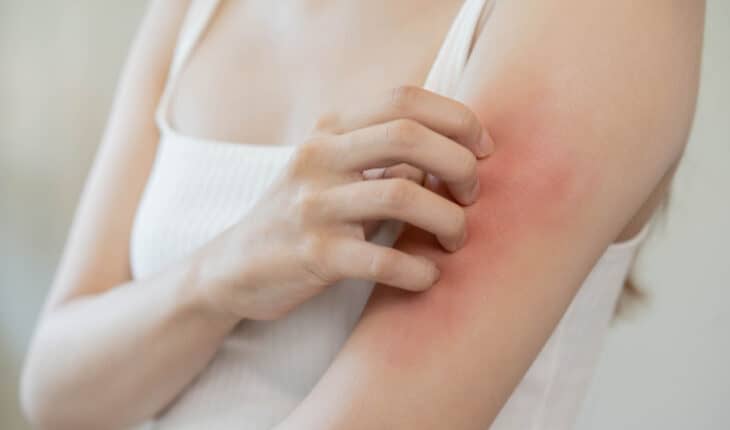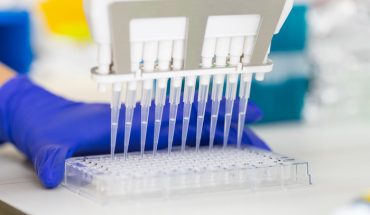Fewer cases of melanoma were observed in people with a history of atopic diseases, such as allergic asthma or rhinitis, than in nonatopic people. The risk of melanoma in people with atopy was up to 50% lower than in the control group. In addition, people with atopy had a considerably lower overall risk of skin cancer, according to estimates by experienced dermatologists. The prevalence of cancers in extracutaneous sites was also lower in atopic people. The study, conducted in collaboration between the University of Eastern Finland and Kuopio University Hospital, included nearly 500 people with an increased risk of skin cancer. The findings were published in Melanoma Research.
Atopic diseases, such as allergic asthma, allergic rhinitis and atopic dermatitis, have become increasingly prevalent in industrialised countries over the past decades. The prevalence of skin cancers, too, has increased, which has raised questions about a possible association between the two. Indeed, the association of atopic diseases and skin cancer has been studied before, but with somewhat inconclusive results. Studies have suggested that chronic inflammation associated with atopic diseases, or an abnormal immune response, may either contribute to the development of cancer, or prevent it.
“The latest theory is that the skin has a naturally occurring autoreactive immunoglobulin E response that could protect against carcinogens and skin damage leading to cancer. This theory makes sense because atopic diseases typically involve an IgE-mediated allergy, so the protective mechanism may be even more pronounced in atopic skin,” says Professor Ilkka Harvima, who led the study at the University of Eastern Finland and Kuopio University Hospital.
Conducted under the North Savo Skin Cancer Programme, the study recruited 496 adult patients estimated to have an increased risk of a skin cancer, such as basal cell carcinoma, squamous cell carcinoma or melanoma, in the dermatological outpatient clinic of Kuopio University Hospital. Experienced dermatologists at the University of Eastern Finland carefully analysed the patients’ background information and medical history and examined their skin. The dermatologists also classified the patients into different skin cancer risk classes, namely low risk, moderate risk and high risk. The patients’ history of atopic diseases was also analysed, after which atopic patients were divided into groups based on whether they had mucous membrane atopy or atopic dermatitis.
A key finding of the study is that in the group consisting of 171 atopic patients, there were considerably fewer cases of melanoma, considerably fewer cancers in extracutaneous sites, and a considerably better general skin cancer risk classification than in the nonatopic group. Logistic regression analysis showed that in atopic patients, the risk of melanoma was almost 50% lower, and the risk of cancers in extracutaneous sites was more than 50% lower than in nonatopic patients. When 94 immunosuppressed patients were removed from the analysis, the reduced melanoma risk was found to be particularly pronounced in the mucous membrane atopy group, where the risk was more than 50% lower than in the nonatopic group.
However, there was no statistically significant association between atopy and the severity of photoageing, actinic keratoses, nevus count, basal cell carcinoma and squamous cell carcinoma. In addition, serum total IgE levels were not associated with these skin changes nor with cancers in extracutaneous sites. Since the research design was cross-sectional, the researchers were unable to demonstrate a causal relationship.
“The cellular mechanism between atopy and melanoma needs to be studied further, and skin biopsies taken from the study subjects are currently under analysis,” says Doctoral Researcher Jenni Komulainen, M.D., the first author of the study.
Research conducted under the North Savo Skin Cancer Programme has previously concluded that mortality due to malignant melanoma in the North Savo region is relatively high in relation to its incidence, and the researchers also observed fewer cases of melanoma among people taking vitamin D supplements regularly. Professor Harvima notes that in order to reduce melanoma and other skin cancers in the North Savo region, it is vital to identify further factors that are relevant to the risk of developing cancer.
- Combination of drugs could prevent thousands of heart attacks - 21st April 2025
- UQ Study Links Poor Teen Diets to Heavy Social Media Use - 21st April 2025
- Gut microbiome could delay onset of type 1 diabetes - 3rd April 2025






